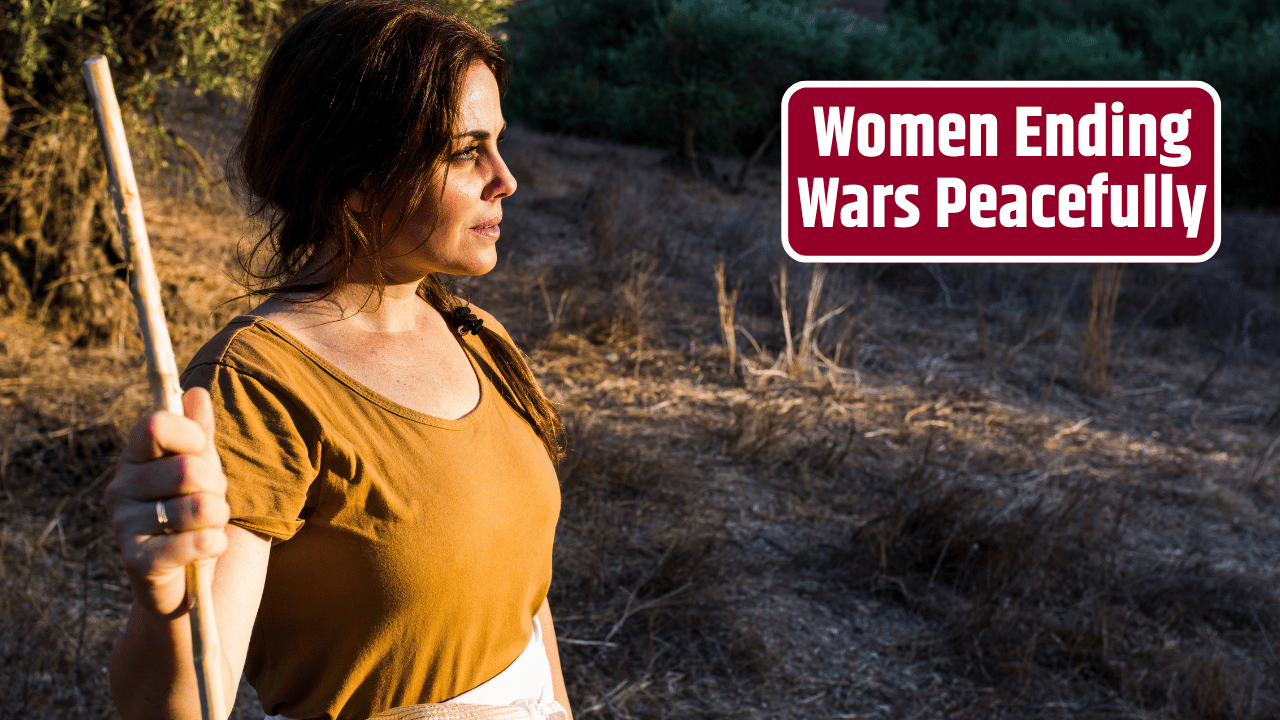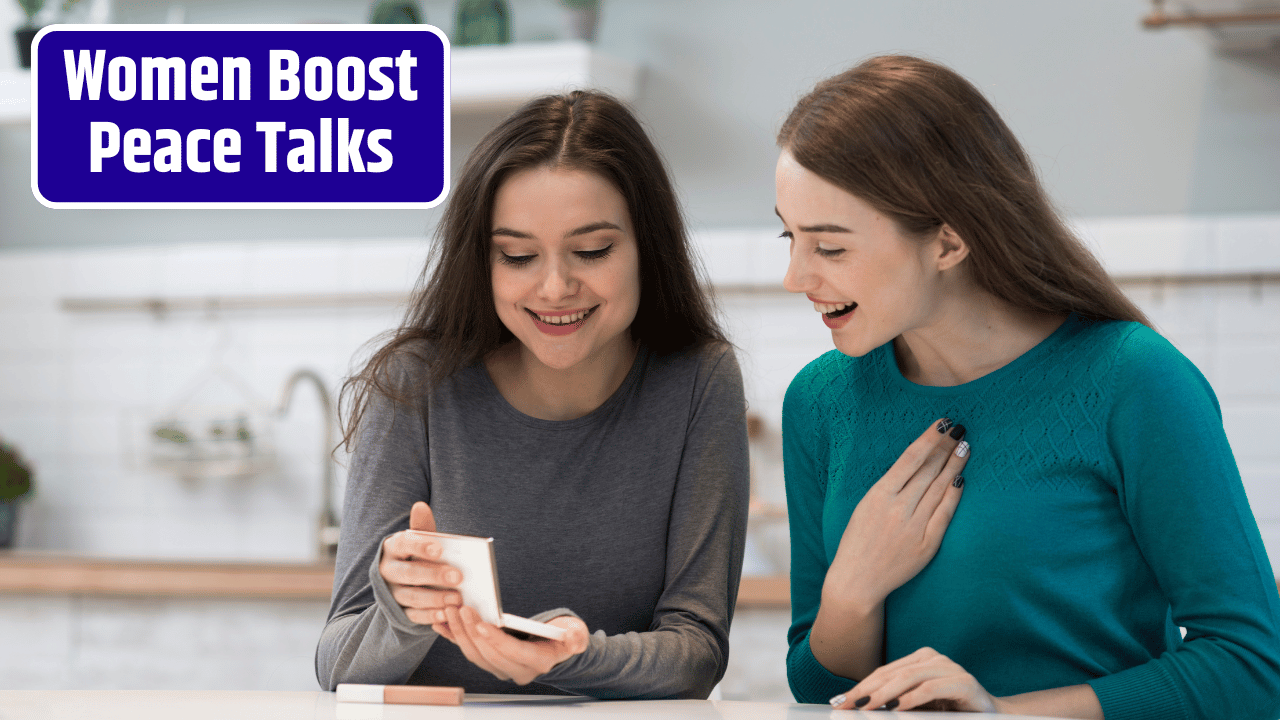Here’s a story that rarely makes the news: A group of women, tired of burying their children and dodging bullets, form a human barricade in front of rebel leaders. They refuse to move until the fighters agree to talk peace. No weapons. No fanfare. Just guts, grief, and a stubborn refusal to let the war go on.
Sound dramatic? It’s not fiction. That was Liberia, 2003. And that movement, led by Leymah Gbowee and thousands of ordinary women in white T-shirts, helped end a brutal civil war and paved the way for Africa’s first elected female president.
So why aren’t we talking more about the women who end wars?
Because, let’s be honest—when it comes to conflict, the world still puts its faith in guns and guys in suits. But if we really want peace—durable, lasting, community-rooted peace—then we better start paying attention to the women who’ve been getting it done for decades.
Table of Contents
What Happens When Women Are Involved in Peacebuilding?
Peace stops being performative.
Instead of just dividing land and power, peace agreements start to actually heal. Women tend to bring in community concerns, long-term social issues, and—shockingly—basic human needs like safety, education, and food.
Here’s what studies have shown:
| With Women Involved | Without Women Involved |
|---|---|
| Peace is 35% more likely to last 15+ years | Agreements often collapse within 5 years |
| Higher focus on reconciliation & social justice | Power-sharing dominates the agenda |
| Inclusion of gender-based violence protections | Often ignored or downplayed |
And it’s not just about the outcome—it’s about how peace is built. Women are more likely to use dialogue, empathy, and local knowledge. They bring in voices that are usually left out: youth, minorities, the displaced.
They’re not looking to “win” the war. They’re trying to end it—for good.
From Frontlines to Front Rooms
Women in conflict zones aren’t waiting around for permission to act. They’re running underground schools in Taliban-held Afghanistan. They’re coordinating food supply lines in Gaza. They’re negotiating with militias in the Congo. All while managing homes, dodging danger, and raising the next generation.
In Colombia, women insisted that the peace agreement with FARC include rural development, land reform, and recognition of gendered violence. In Northern Ireland, the Women’s Coalition refused to be sidelined in the Good Friday Agreement, pushing for education and social inclusion.
These weren’t side notes. They were deal changers.
But more often than not, these efforts are local, informal, and unpaid. They happen in kitchens, mosques, market stalls—not conference halls. And because they don’t look like “official diplomacy,” they get overlooked. Or worse—dismissed as “emotional” work.
The Real Barrier? Power. And Money.
Let’s cut the fluff: Women aren’t excluded from peacebuilding because they’re incapable or uninterested. They’re excluded because power doesn’t like sharing the table.
Most peace delegations are still over 90% male. Funding for women-led peace organizations? Less than 1% of global aid in conflict-affected areas. Less than. One. Percent.
It’s not about capacity. It’s about control.
If you don’t believe me, ask any woman peacebuilder how many hoops she has to jump through for basic support. How many meetings she sits through while being talked over. How many reports she files just to get $10,000 to run trauma counseling in a war-torn village.
We love the idea of women in peace. But we don’t back it up with budgets, visibility, or decision-making power.
Building Peace Like a Woman
Let’s talk about the how—because the way women approach peace isn’t just different, it’s smarter.
- They listen first. Instead of imposing top-down solutions, they build trust from the ground up.
- They focus on relationships. Not just signing deals, but healing wounds.
- They plan for the long haul. Not just ending fighting, but preventing relapse.
And honestly? It works. Maybe because women know what’s really at stake. They’re the ones burying loved ones, running from shellfire with toddlers, starting over again and again with almost nothing.
When you live the consequences of war that closely, peace becomes personal.
So, What Needs to Change?
Okay, so we’ve got the receipts. What now?
Here’s the short list:
| Issue | Fix It With |
|---|---|
| Token inclusion | Mandatory gender quotas in peace talks |
| Chronic underfunding | Direct support for grassroots women-led groups |
| Informal efforts overlooked | Official recognition of community peace work |
| Safety risks for women leaders | Real security protections, not lip service |
| Male-dominated power structures | Train, support, and promote female mediators |
It’s not rocket science. But it does require intention—and the political will to shift old power dynamics.
Peace isn’t a photo op. It’s a process. It’s emotional. Messy. Local. And it takes everyone—especially the ones who’ve been told they’re too soft, too small, too “non-political.”
Women have been proving for generations that they don’t just survive war. They transform it.
And if the world wants peace that sticks? It better start listening.
FAQs
Why are women’s voices missing from peace processes?
Structural inequality, lack of funding, and old-school political gatekeeping. Simple as that
Are women actually more effective negotiators?
Studies say yes—especially when it comes to long-term peace and social rebuilding.
What’s the first step to including more women in peacebuilding?
Fund their work. Protect their rights. And make their voices count at the decision-making table.














